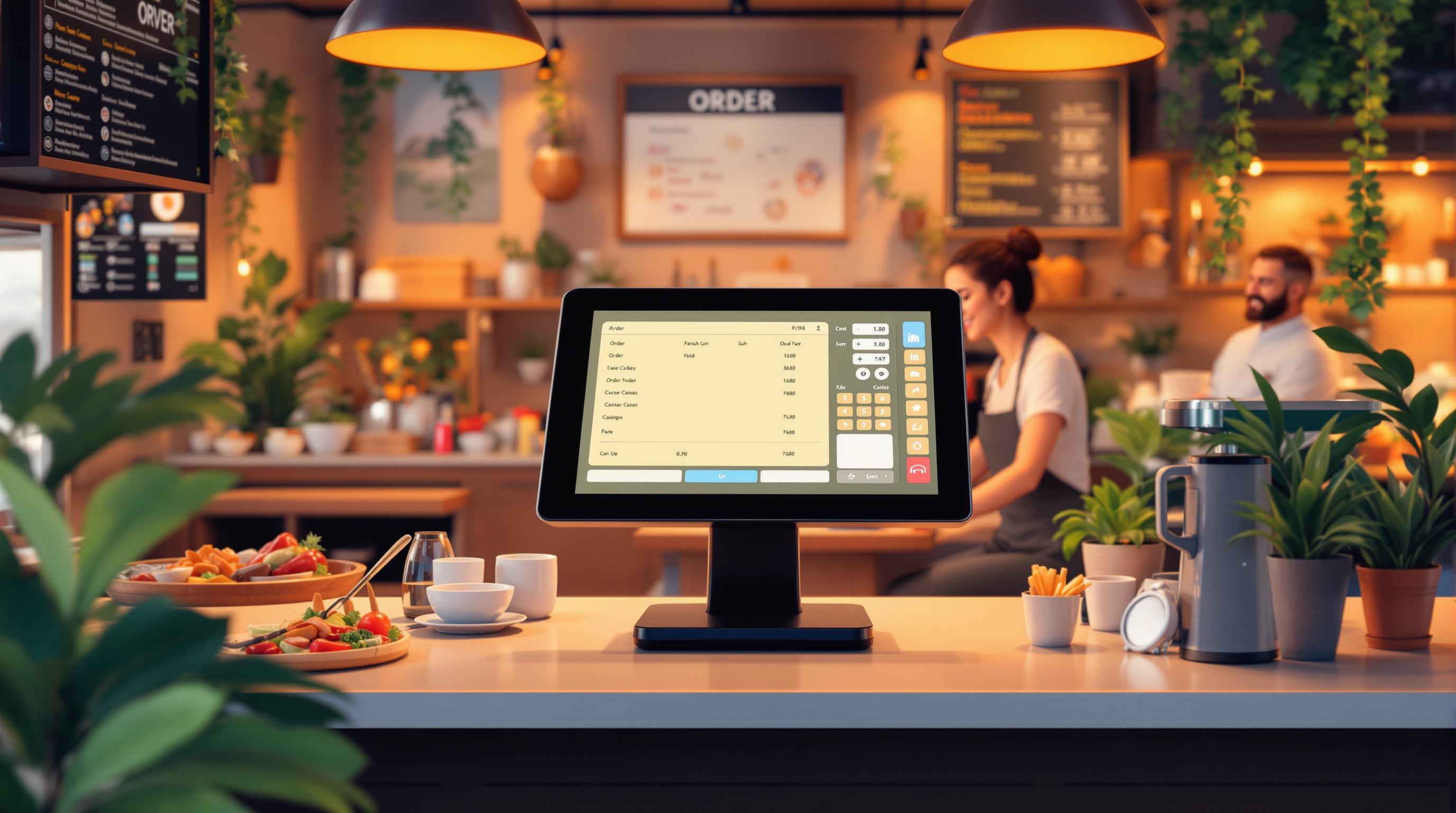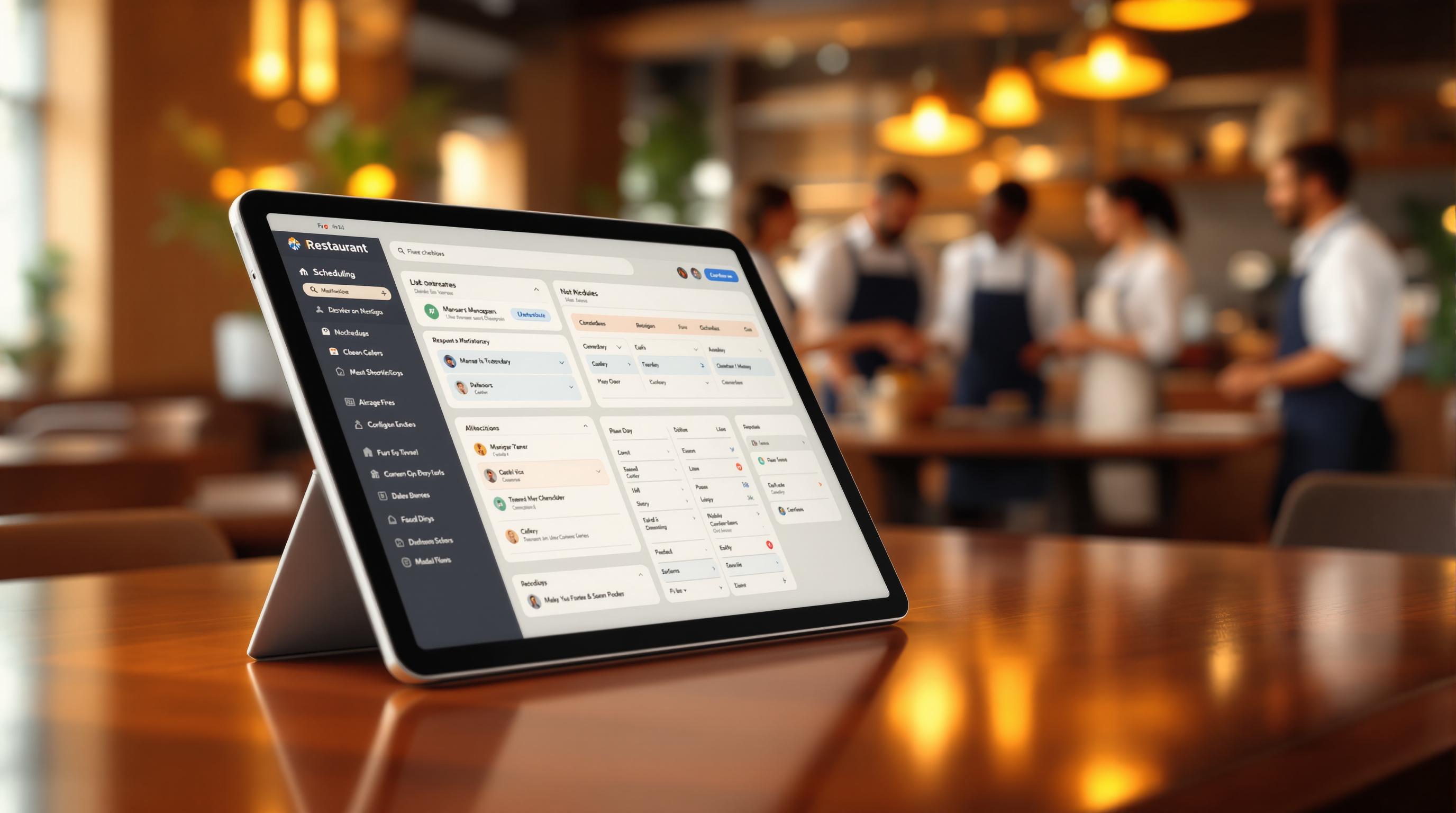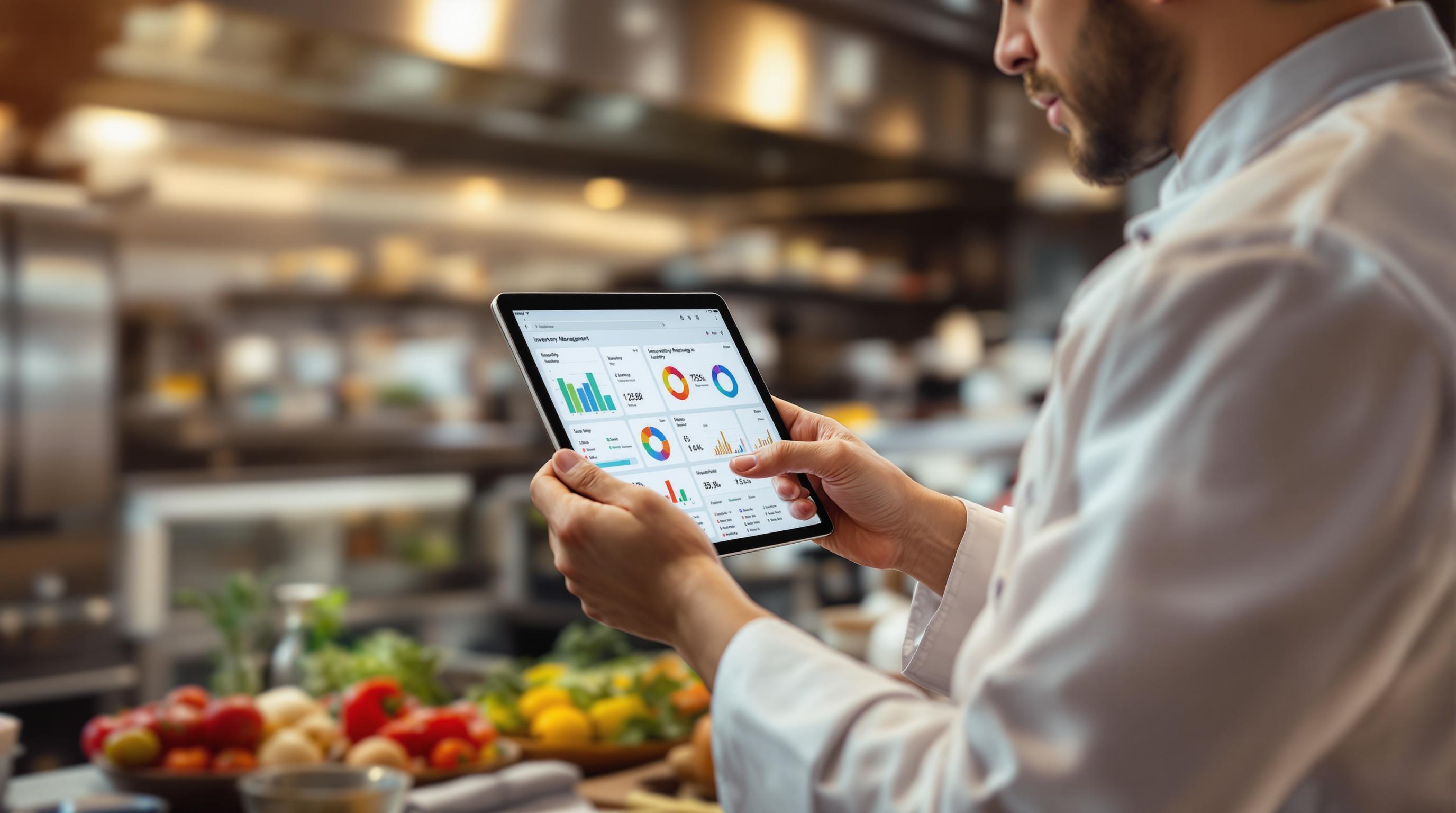Choosing the right restaurant ordering system can make or break your business. Here’s a quick comparison to help you decide:
- Online Ordering Systems: Easier to set up, broader reach, boosts revenue by up to 30%, but comes with 10-30% commission fees and limited customer data control.
- In-House Systems: Higher upfront cost, full control over customer experience and data, no commission fees, but takes time to implement and train staff.
Quick Comparison
| Aspect | Online Ordering Systems | In-House Systems |
|---|---|---|
| Cost | Low setup, 10-30% per-order commissions | High setup cost, no commissions |
| Customer Experience | Self-paced, larger check sizes | Personalized, direct interaction |
| Efficiency | Automated, multi-platform integration | Full control, real-time updates |
| Data Access | Limited, shared with platforms | Full ownership, custom insights |
| Growth Potential | Wider reach, fast sales growth | Better retention, brand control |
Key takeaway: Online systems are great for quick growth and convenience, while in-house systems offer long-term savings and control. A hybrid approach could provide the best of both worlds.
Related video from YouTube
Differences Between Online and In-House Systems
Restaurant ordering systems have come a long way, offering two main options: online and in-house systems. Each comes with its own set of pros and cons. Let’s break down the key differences across a few important areas.
Cost Analysis
The cost structure is a big factor when deciding between these systems. Online ordering platforms usually take a commission of 10% to 30% per order [4]. While the upfront cost is low, these ongoing fees can eat into your profits over time.
On the other hand, in-house systems require a higher initial investment but can save money in the long run. For example, Trapper's Sushi saved close to $25,000 in commission fees after switching from third-party apps to an in-house system powered by Toast [1].
Ease of Setup
Setting up these systems is another key difference. Online platforms are easier to launch since they come with ready-to-use interfaces and payment systems. You can often get started within a few days [4].
In-house systems, however, take more effort. They involve custom software development, training staff, and integrating with your POS system. While more time-consuming, they offer a tailored solution.
Customer Experience
Customer experience is shaped differently depending on the system you choose. Online platforms come with perks like order tracking and notifications [3], but restaurants have little control over the interface or how they interact with customers.
With in-house systems, restaurants can create a more personalized experience. You can tweak menus, manage orders directly, and build stronger customer relationships.
"In-house systems allow restaurants to retain full ownership of customer data, enabling them to analyze order patterns and preferences to improve marketing and customer service" [4].
Knowing these differences can help you decide which system best matches your restaurant’s needs. Next, let’s dive into the specific benefits each option brings to the table.
Advantages of Online Ordering Systems
Online ordering systems are a game-changer for restaurants aiming to grow their customer base and improve day-to-day operations.
Boosting Reach and Revenue
Digital ordering platforms help restaurants reach more customers and increase sales. In fact, restaurants using these systems see 32% more orders and higher average ticket sizes compared to traditional methods [2]. Revenue gains are clear - restaurants report increases ranging from 11% to 20% after adopting online ordering systems [5]. These platforms encourage customers to order more by showcasing tempting digital menus that are easy to navigate.
Streamlining Operations with Automation
Modern online ordering systems simplify operations by integrating with POS systems and automating routine tasks. This reduces common issues like manual order errors and lightens the workload for staff, allowing them to focus on preparing food and delivering great service. Automation also ensures menus stay up-to-date. For example, platforms like Toast let restaurants make real-time menu changes and updates [1], so customers always see accurate options and prices.
Making Life Easier for Customers
Online ordering platforms prioritize customer convenience with features like allergen details, real-time order tracking, customization options, and visually appealing menus. These tools make the ordering process smoother and more enjoyable.
Daniel Ganem, Co-Founder & Executive Chef at Zuuk Mediterranean Kitchen, highlights the power of visual menus:
"customers buy with their eyes", emphasizing how well-designed menus can drive sales [1].
While online systems offer convenience and scalability, some restaurants may still prefer in-house solutions for greater control and a more personalized approach.
sbb-itb-53f0a12
Advantages of In-House Ordering Systems
In-house ordering systems give restaurants more control over their operations, allowing them to streamline processes, reduce mistakes, and improve the overall customer experience.
Direct Control Over Customer Experience
With in-house systems, restaurants manage every aspect of customer interaction and service. This helps build stronger relationships with customers and ensures consistent branding and service quality.
Restaurants can tailor their ordering platforms, handle custom requests efficiently, and provide instant updates to customers. Real-time menu changes and pricing adjustments are easy to implement, ensuring customers always have access to accurate information when placing orders.
Less Dependence on Third Parties
A key benefit of in-house systems is avoiding reliance on external platforms. This independence means fewer disruptions caused by third-party technical issues and more operational flexibility.
"Direct online ordering enables you to accept more orders and increase profits. It also allows you to engage your team in cross-training and to control specials, like super bowl restaurant promotions." - Katherine Pendrill, TouchBistro [3]
Full Access to Data and Insights
In-house systems give restaurants complete ownership of their data, making it easier to track customer habits, adjust menus, and refine marketing efforts. Built-in dashboards provide valuable insights, such as:
- Ordering trends and customer preferences
- Peak ordering times
- Customer retention metrics
- Best-selling menu items
- Performance of promotions
These tools also offer detailed reports on new, active, and canceled orders, as well as lifetime sales data [7]. This information helps restaurants make informed decisions and adjust their strategies based on real customer behavior.
While these systems offer unmatched control and data access, they come with their own set of challenges, which we’ll cover in the next section.
Comparing Advantages and Disadvantages
Selecting between online and in-house ordering systems can shape how a restaurant operates and generates revenue. For example, online systems have been shown to increase revenue by 11-20% [6]. However, the best option depends on your business model and priorities.
Advantages and Disadvantages Table
| Aspect | Online Ordering Systems | In-House Systems |
|---|---|---|
| Cost | - 10-15% per-order commissions - Customer fees - Low initial setup costs |
- Higher upfront investment - No commissions - Lower long-term costs |
| Customer Experience | - Self-paced ordering - Fewer order errors - 20% larger average check size [6] |
- Direct customer interaction - Personalized service - Quick issue resolution |
| Operational Efficiency | - Automated order processing - Reduced staff workload - Multi-platform integration |
- Full operational control - Real-time menu updates - Streamlined workflow |
| Data Management | - Limited customer data access - Shared insights - Limited analytics tied to platforms |
- Full data ownership - Complete customer insights - Custom reporting |
| Business Growth | - Up to 30% revenue growth potential [6] - Wider market reach - Built-in marketing tools |
- Better customer retention - Direct marketing control - Brand control |
"Online ordering gives customers the ability to order when and where they want to, without the kinds of communications issues that typically occur with call-in orders" [3].
Smaller restaurants often find in-house systems beneficial due to their focus on direct customer engagement and lower long-term costs. On the other hand, restaurants aiming for faster growth may lean toward online systems for their broader reach and automation, even with higher fees.
A hybrid approach can strike a balance. By combining the reach of online platforms with the personal touch of in-house systems, restaurants can cater to a wider audience while preserving their brand identity. The key is to align the system with your restaurant's operations, goals, and customer expectations.
Conclusion
Deciding between online and in-house ordering systems is a key factor in navigating the digital restaurant landscape. The right choice depends on your restaurant's specific needs, goals, and how you operate.
For well-established restaurants with steady operations, an in-house system can offer benefits like full control over customer data and stronger direct relationships. This model works well for businesses focused on brand control and customer loyalty. Take Domino's, for example - they’ve used their in-house system to maintain control and gain valuable insights into their customers.
On the other hand, smaller restaurants or those aiming for rapid growth might benefit more from online ordering platforms. These systems require less upfront investment and can help boost sales, especially since 70% of consumers prefer ordering directly from restaurants [2]. By using platforms that encourage direct interactions, restaurants can strengthen customer loyalty.
A hybrid approach is another option, combining the reach of online platforms with the control of in-house systems. This strategy allows restaurants to grow while maintaining oversight of their operations. For instance, direct online ordering has been linked to a 19% increase in average transactions [3], making it a powerful tool for balancing growth and control.
When deciding, think about your current setup, target audience, and long-term goals. The system you choose should not only support your restaurant’s present needs but also set the stage for future growth in an increasingly digital world.


